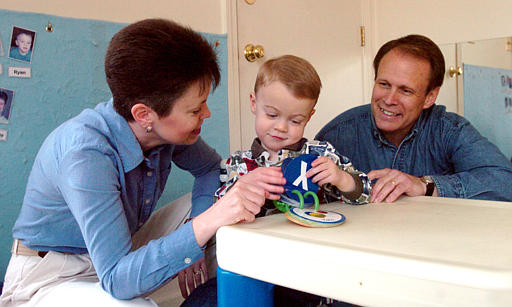The complexities of Autism Spectrum Disorder can be daunting. This is especially true on the side of the parent or caregiver. That’s the driving force behind creating this blog post - to shine a light on the multifaceted world of ASD treatments and make your journey less overwhelming.
In this article, we’ll explore together the various therapies that work, age-dependent approaches, all-inclusive strategies, and the latest tech innovations in autism treatment. At the end of it, you’ll be armed with the crucial information to provide the best possible care for your little ones.
Introduction
Autism Spectrum Disorder (ASD) is a unique, complex neurological and developmental disorder. A variety of challenges with social interactions, repetitive behaviors, and issues with speech and nonverbal communication are the hallmark symptoms of ASD. However, each individual with autism brings their distinct strengths and abilities to the table, and the disorder presents differently in each individual.
Catching the signs early and introducing intensive education can make a world of difference. Early diagnosis and intervention are key in managing ASD symptoms effectively. The sooner the signs of autism are identified, the better parents and caregivers can guide and assist their kids lead a fulfilling life.
Understanding Autism Treatment
Autism treatment is primarily about easing the symptoms and challenges associated with autism, rather than “curing” the condition. With kindness, patience, and suitable therapeutic support, those with autism can enhance their communication, social skills, and cognitive abilities.
It’s essential to remember that each person with autism is unique, thus their treatment should be individualized, catering to their needs, strengths, weaknesses, and unique traits.
Treatment Options for Autism
There are several treatments available to manage autism symptoms effectively. These could be individual treatments, or a cocktail of the following and much more can be utilized.
Applied Behavior Analysis (ABA)
Applied Behavior Analysis is a highly effective treatment for autism. ABA focuses on understanding behavior and its interaction with different environments. It helps to encourage positive behaviors and reduce those that may be problematic.

Speech and Language Therapy
Speech and Language Therapy serves as a vital component in the toolkit of autism treatments, addressing the unique communication hurdles that individuals with ASD often encounter. This therapy is instrumental in enhancing the communication abilities of these individuals, which is more than just speech. It’s about comprehending, producing, and using verbal and non-verbal language appropriately.
Speech and Language Therapists work on a wide array of skills. They address articulation problems, helping individuals articulate words and sentences more clearly, and minimize any speech irregularities. They also work on language understanding, ensuring that individuals can follow conversations and understand instructions, enhancing their ability to process what is being said to them.
Another focus is expressive language. Individuals with autism can know what they want to say, but may not be able to know how to communicate effectively. Therapists can guide them in constructing sentences, storytelling, and expressing thoughts, feelings, and ideas in a coherent, organized manner through various methods of therapy.
Equally important is the non-verbal aspect of communication. Since individuals with ASD often struggle with interpreting and using non-verbal cues, therapists can help them understand body language, facial expressions, eye contact, and gestures, and how these cues intertwine with language in daily interactions.
Social communication skills are also a critical part of this therapy. Individuals with ASD often find it challenging to engage in social situations and conversations. Therapists help them understand the back-and-forth nature of conversations, turn-taking, and recognizing and respecting personal space.
In essence, speech and language therapy provides individuals with ASD the tools they need to express their needs, wants, thoughts, and feelings. By tailoring strategies to each individual, this therapy assists in making interactions more meaningful and effective, ultimately enhancing their overall quality of life.
Occupational Therapy
Occupational therapy assists in the development and improvement of necessary life skills such as dressing, eating, and relating to people. The goal is to foster independence and boost the quality of life.
Social Skills Training
Social Skills Training provides tools to improve interaction in social settings. This training encompasses understanding emotions, empathy, conversation skills, and relationship building.
Cognitive Behavioral Therapy (CBT)
CBT aids individuals by helping them manage their emotions and behaviors, reducing anxiety, and promoting effective coping strategies.
Medication Management
While there isn’t a specific medication to cure autism, certain medicines can help manage related symptoms like attention problems, hyperactivity, and anxiety.
Tailoring Treatment for Different Age Groups
In the vast spectrum of autism treatments, one size does not fit all. A treatment’s effectiveness is heavily dependent on its alignment with the individual’s age, development stage, and unique set of strengths and challenges. Hence, treatment plans must be as diverse and dynamic as the individuals themselves.
Autism Treatment for Adults
When we talk about treating adults with ASD, the focal points often shift towards fostering independence and improving the overall quality of life. Vocational training assists adults in identifying their interests and talents and leverages them to explore employment opportunities. This boosts their self-esteem and sense of purpose in addition to paving the way for a more independent life.
Developing independent living skills is another crucial aspect of adult treatment. This could involve teaching them to manage their personal care routines, perform household chores, manage their finances, or use public transportation. The ultimate goal is to foster self-reliance to the highest degree possible.
Another key consideration in adult autism treatment is managing co-occurring mental health issues. It’s not uncommon for adults with ASD to experience anxiety, depression, or other mental health disorders. Hence, regular mental health screenings and appropriate therapeutic or medical interventions are integral components of comprehensive adult autism treatment.
Autism Treatment for Children
In children, the focus of treatment tends to center around harnessing the formative nature of the early years to make the most impactful strides in development. Enhancing communication and social skills are often primary targets. Therapists work diligently with children to help them express their thoughts and feelings effectively and engage meaningfully with their peers and adults in their lives.
Behavior management is another critical part of treatment for children with ASD. Through techniques such as Applied Behavior Analysis, therapists can help children replace disruptive behaviors with more positive ones, which can improve their learning and social interactions.
Early intervention is an essential principle when treating children. Early treatment interventions increase the child’s chances of developing and improving essential life skills. Research consistently shows that early intervention can significantly improve a child’s development and increase their ability to navigate the world independently and effectively.
Regardless of the age or developmental stage, each person with ASD is unique, and their treatment plan should reflect their uniqueness. With the right approach, guided by understanding, patience, and empathy, as well as the right professional help, individuals with ASD can reach their full potential and lead fulfilling lives.

Holistic Approaches to Autism Treatment
A holistic approach acknowledges and addresses the physical, emotional, social, and spiritual wellbeing of an individual.
Global Initiatives and Organizations
Various global organizations are tirelessly working to support autism research and to provide resources. They aim to raise awareness, promote research, and advocate for the rights of individuals with autism.
Success Stories and Case Studies
Reading about the success stories and case studies of individuals with autism can provide hope and inspiration. They underscore the potential for fulfilling lives with the right kind of support.
Technological Advancements in Autism Treatment
In our increasingly digital world, technology is stepping up to play a pivotal role in enhancing autism treatment, ushering in a new era of pioneering approaches to manage ASD more effectively.
A shining example of this integration is the rise of applications specifically tailored for individuals with ASD. Apps like Otsimo are gaining recognition for their interactive, immersive learning environments. They offer engaging educational games focusing on enhancing crucial developmental areas, such as speech, cognitive functions, and fine motor skills. The unique appeal of these apps lies in their innovative approach to making learning a captivating, enjoyable process, thereby serving as a great supplementary tool alongside traditional therapies.
The world of Virtual Reality (VR) is another fascinating frontier in technological advancements. By crafting immersive, controlled settings, VR offers a unique platform for individuals with ASD to hone their social skills, experience varied scenarios, and handle sensory sensitivities at their own comfort level. It acts as a liaison between the structured therapeutic setting and the real world, helping them navigate social interactions with more confidence and ease.
Artificial Intelligence (AI) has also made significant inroads into autism treatment. AI-powered tools have the capability to monitor and analyze behavioral patterns, identify early signs of autism, and devise personalized, adaptive learning journeys for individuals with ASD. These tools can offer invaluable insights that help therapists, caregivers, and the individuals themselves to comprehend and manage ASD in a more effective manner.
Another innovative leap is the introduction of robot-assisted therapy. Social robots, engineered to interact with individuals with ASD, aid in developing social and emotional skills like recognizing and expressing emotions, maintaining eye contact, and participating in conversational turn-taking.
Teletherapy, or online therapy, is a revolutionary change that has made therapy services accessible irrespective of geographical constraints. It enables individuals with ASD and their families to connect with therapists and avail their services via video conferencing, thus making therapy more convenient and flexible.
In conclusion, technology is not just reshaping autism treatment, but also expanding its reach. It’s tearing down barriers, opening up new avenues for learning, and ultimately empowering individuals with ASD to tap into their full potential. As we continue to innovate and explore, we can anticipate even more advanced, customized, and effective solutions to enhance the lives of those navigating the world of autism.
There’s no “one-size-fits-all” treatment for autism. A mix of therapies tailored to an individual’s unique needs can lead to substantial improvements.




